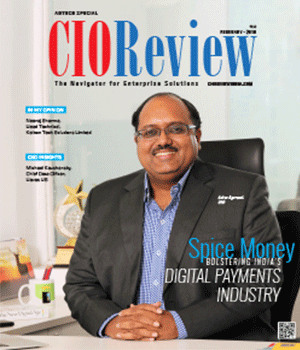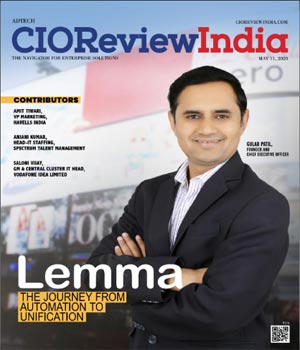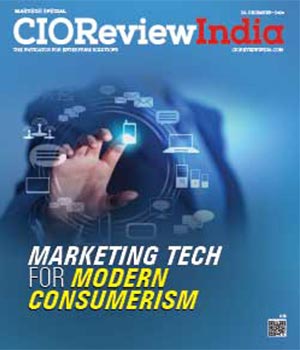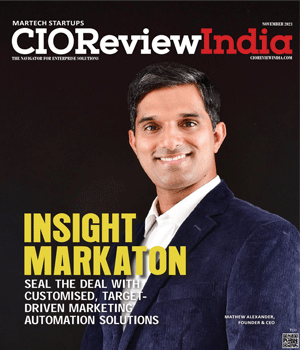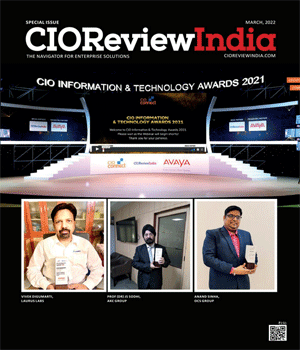
Marketing in 2014: More creative, scientific, interactive and fast-paced than ever before!
Matt Preschern, SVP & Enterprise CMO, Windstream | Tuesday, 19 July 2016, 10:16 IST
 One of the most exciting aspects of working in the marketing and communications field is being on the forefront of new trends in customer behavior and marketing strategy. Currently, we’re engulfed in the trend of customer empowerment; today’s hyper-informed customershave access to more data than ever before. Further, theyengage with your brand on their terms, when and how they choose. Customers will do their due diligence when it comes to your brand, conducting their own primary research and engaging their friends and colleagues long before they contact your sales team—if they ever do. Most notably, customer expectations are increasing; they require instant fulfillment with no questions asked. And if they are not satisfied with your product, solution or service, they’ll take to their social networks to broadcast their dissatisfaction to the world.
One of the most exciting aspects of working in the marketing and communications field is being on the forefront of new trends in customer behavior and marketing strategy. Currently, we’re engulfed in the trend of customer empowerment; today’s hyper-informed customershave access to more data than ever before. Further, theyengage with your brand on their terms, when and how they choose. Customers will do their due diligence when it comes to your brand, conducting their own primary research and engaging their friends and colleagues long before they contact your sales team—if they ever do. Most notably, customer expectations are increasing; they require instant fulfillment with no questions asked. And if they are not satisfied with your product, solution or service, they’ll take to their social networks to broadcast their dissatisfaction to the world.
The implications for marketers—whether B2B,B2C or B2B2C—are numerous and potentially game changing.Traditional marketing philosophy has been turned upside down. In an effort to be successful in this new marketing world, I suggest that marketersknowthe answers to the following six questions:
1. Are your brand and culture aligned?To become a great brand, you first need to become a great company. The only way to have a strong company is to have a strong culture. A brand thrives when its employees—at every level—embrace the brand promise. Your team must authentically live up to that promise daily, believing it and behaving in a way that promotes excellence.Collaboration between marketing and human resources helps reinforce the importance of living the brandto the workforce. Why is it so important that your organization fully embraces your brand promise? Your customers will engage with your brand multiple times—oftenwithout your knowledge—and to ensure a consistently exceptional customer experience, thebrand promise must be adhered to and delivered against at all times.
2.Do you really know your customers?This question digs far deeper than a transactional view and customer history. Until recently, B2B marketing has been delivered in a fairly sales-oriented fashion with little in the way of personalization or emotional appeal. But as the customer profile changes—and expectations rise—B2B marketers need to adjust their approach. We're not marketing to buildingsor addresses. We're striving to reach decision-makers, and those decision-makers are people.They face challenges, interact with their networks andconsume content all day long.As individuals, customers interact witha variety of sources; the better we understand this interaction pattern, the better-positioned marketers are to join the conversation. Today’s customers areintensely active on social media, requiring companies to both listen and engage through those channels. To that end, smart marketers rely on analytics—not just data sets. True analytics provide actionable insights and shape marketing programs, helping drivedifferentiated messages that resonate with your audience.
3. Is your content compelling enough to stand out and be noticed? As customers search for information, companies are responsible for providing valuable, useable content. Gone are the days of posting high-level information that pushes a customer to click or call. Without compelling content—and lots of it—customers will quickly dismiss the brand and continue their search. Just as importantly, messaging must be integrated across all channels for maximum impact. Core messaging should be delivered through every vehicle—including email, online, social media, interviews, events and even day-to-day account management. Furthermore, the empowered customer is not taken in by content without legitimate proof points; truly compelling content needs to provide value and demonstrate utility to the customer before it lends credibility to the brand it represents.
4. Can your marketing technology infrastructure support personalized interactions? Never before has there existed so strong a need for marketing and sales to collaborate, integrate, and coordinate as there is today. For optimal results, marketing and sales need to function in complete alignment and a closed loop. A strong customer relationship management (CRM) system, coupled with an intuitive marketing automation platform, allows for timely, relevant content delivery throughout the customer buying cycle, nurturing prospects through the consideration, evaluation and purchase stages. When properly executed, marketing automation provides potential customers with the content they need at each phase of the buyer’s journey, assisting customers with their decisions while positioning companies as problem solvers. A close collaboration with IT and the Chief Information Officer ensures that your technology investments are focused on providing an excellent customer experience. This system builds trust with customers and motivatesthem to take the next step in the sales process.
5. Are your marketing and sales teams on the same page? We’ve all experienced situations where marketing and sales are functioning in silos, neither department aware of or concerned with what the other team is executing. In reality, neither team works well without the other. The best marketing strategies are laid to waste without the backing of a seasoned and capable sales team reaffirming the message that the marketing team has put into the marketplace. Marketing and sales alignment begins at the top and trickles down to the field; without this cohesion, even the best-laid marketing plans are doomed to fail.
6. Do you know the business impact of your marketing efforts? If you don’t know how you’re doing, you can’t improve. Accurate measurements allow organizations to adjust and improve performance, focusing on driving top-line revenue growth. The true measure of marketing success, in the eyes of the board and leadership team, is increasing top-line business revenue while realizing a positive return on marketing investment (ROMI). Of course, a company’s success starts and ends with the customer experience and marketing is responsible for garnering andgauging successes through net promoter scores and customers’ willingness to recommend your brand. Additionally, measuring as you go enables an organization to move quickly. In today’s fast-paced environment, marketers are forced to execute—and, sometimes, fail—rapidly, and by continuously measuring, we can make adjustments on the fly, keeping pace with the demand from customers.
Asbusiness evolves at an accelerating rate, marketing can no longer be considered a linear process. We don’t have the luxury to test, perfectand hone our strategies before going to market. Savvy marketers today approach marketing challenges with intense curiosity, conducting multiple tests without being stymied by the fear of failure. They simultaneously measure and adjust their plans, taking corrective action as needed.
Ultimately, even the most skilled marketers need support to be successful. It is critical tobuild a team of talented employees and external partners who elevate the marketing equation with additional skills, insights and perspectives.
We live in an exciting time for marketers. Meeting customer demand takes more creativity and collaboration than ever before. Consequently, marketers are responsible for building bridges throughout an organization and fostering engagement with the C-suite to ensure that the company isfirmly focused on delivering an exceptional customer experience that leads to a cycle of perpetual winning.
CIO Viewpoint
Marketing Tech - A CIO Perspective
By Satish Panchapakesan, Senior Vice President & CIO, Arvind Fashions
Blockchain Based Cybersecurity For IoT
By Arunmani Subramanian, VP - Emerging Technologies, YASH Technologies
Data Science & Machine Learning In Fintech
By Jainendra Kumar, Head - Global Delivery Center-India & Senior Director Product Development Software, Diebold NixDorf
CXO Insights
Cyber Security - A Perspective
By Manu Sharma, Director - Information Technology And Corporate Security, OnMobile Global Limited
How Low-Code Is Transforming The Future Of Work...
By Deepak Pargaonkar, VP - Solution Engineering, Salesforce
Incorporating Blockchain Capabilities into...


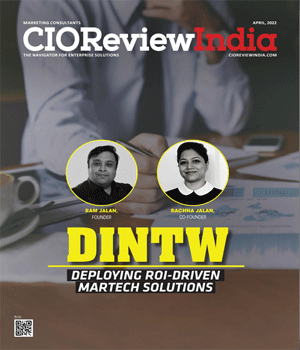
.jpg)
